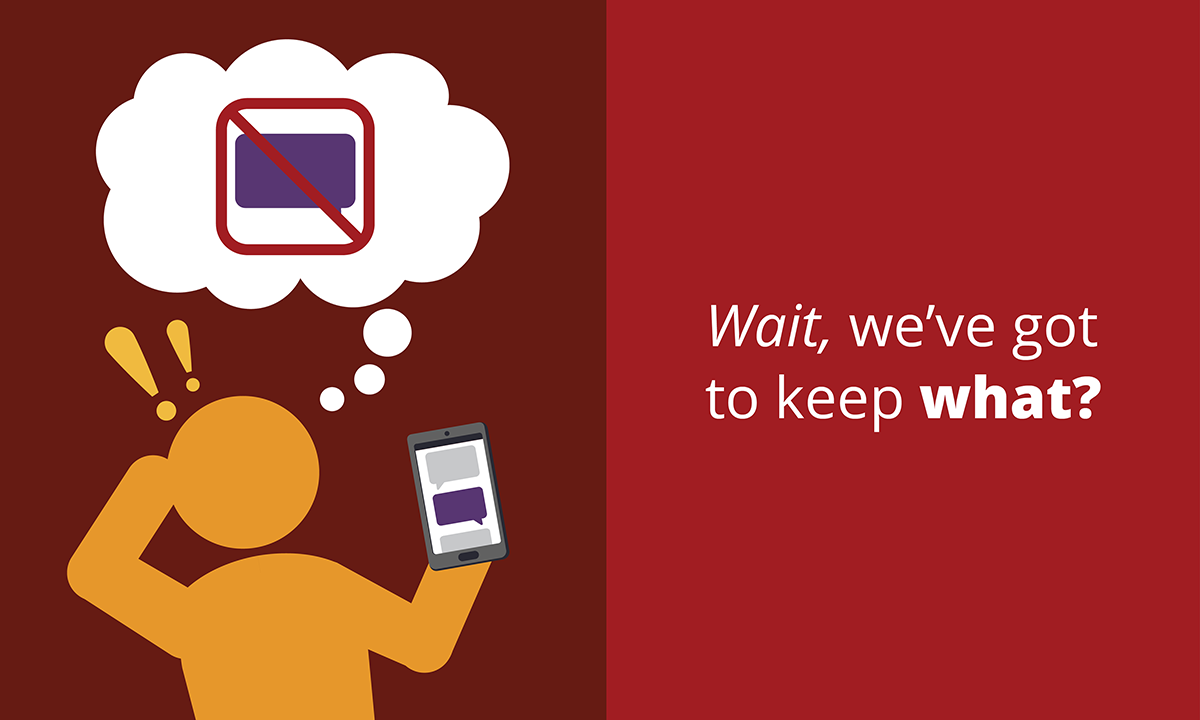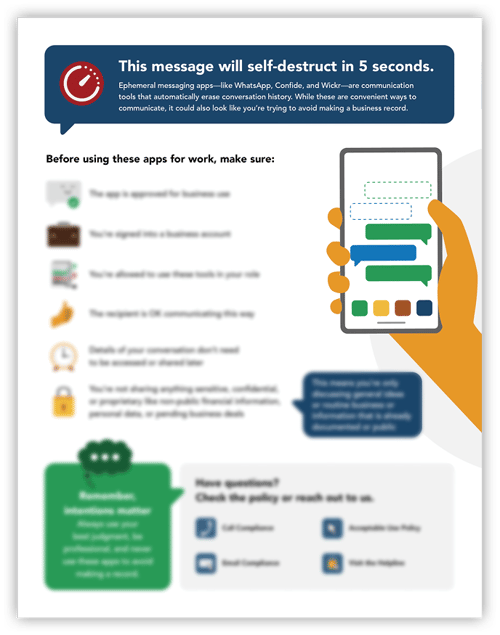
Wait, we’ve got to keep what?
Come with me for a moment on a trip in the way-back machine before the time when our phones doubled as cameras and “social media” was just two unrelated words. Now, think about when you said or did something really dumb then. 😬 Other than you, who else would remember that? Probably only those people who were there. And, if they forget, well... It’s like it never happened. 🫥 .
Fast forward almost to today and we’re constantly faced with a plethora of opportunities to have our missteps memorialized for all time. But then along came ephemeral messaging and brought with it a new pathway to communicate without the anxiety of it living forever.
 Source: CBS The Late Show with Stephen Colbert via giphy
Source: CBS The Late Show with Stephen Colbert via giphy
Ephemeral messaging apps offer interesting and useful features, like:
- Privacy—the message only goes to the intended recipient and disappears quickly
- Security—no data lost if your device goes missing
- Reduction or elimination of data storage costs
But like most tech, you can always count on someone somewhere finding the most uncool way to use it, and then that uncool way being the impetus for regulation—or, in this case, reminders of our obligations.
Just last month, the U.S. Department of Justice Antitrust Division and the Federal Trade Commission reminded us that despite technology changes and updates, we’re still bound by “longstanding obligations … to preserve materials during the pendency of government investigations and litigation.” Yep, the law is still the law—no matter what type of communication tool you’re using. In fact, even Deputy Assistant AG Kumar has had enough, stating, “...neither opposing counsel nor their clients can feign ignorance…”.
 Source: Universal Pictures’ Minions
Source: Universal Pictures’ Minions
Now, don’t misunderstand. No one is saying that ephemeral messaging is bad or should never be used. But what we cannot forget is that business records created using these tools must be retained like any other types of records, and they must be provided in the course of government inquiries or other types of legal actions. ⚖️
Ok, compliance friends, are you ready to train on this one? (That was a rhetorical question; clearly, you’ve got to.) We’ve got your back! Introducing Broadcat’s new job aid all about the do’s and don'ts of ephemeral messaging apps.📱

Use this to communicate your company’s expectations for using these apps—like making sure employees are authorized to use them and that they send only non-sensitive info that’s already documented in your systems. It covers all the basics you need to communicate about ephemeral messaging in one easy-to-deploy, non-ephemeral guide.
For anyone who’s already a member of the Design Club, it’s available now. If you’re not a member, reach out to us and let’s get you signed up. You’ll be able to access this, as well as a whole library of other awesome tools to help you train your teams on exactly what to do, when to do it, and why it’s important.
Warning: this blog post will self-destruct in five seconds… 😉

